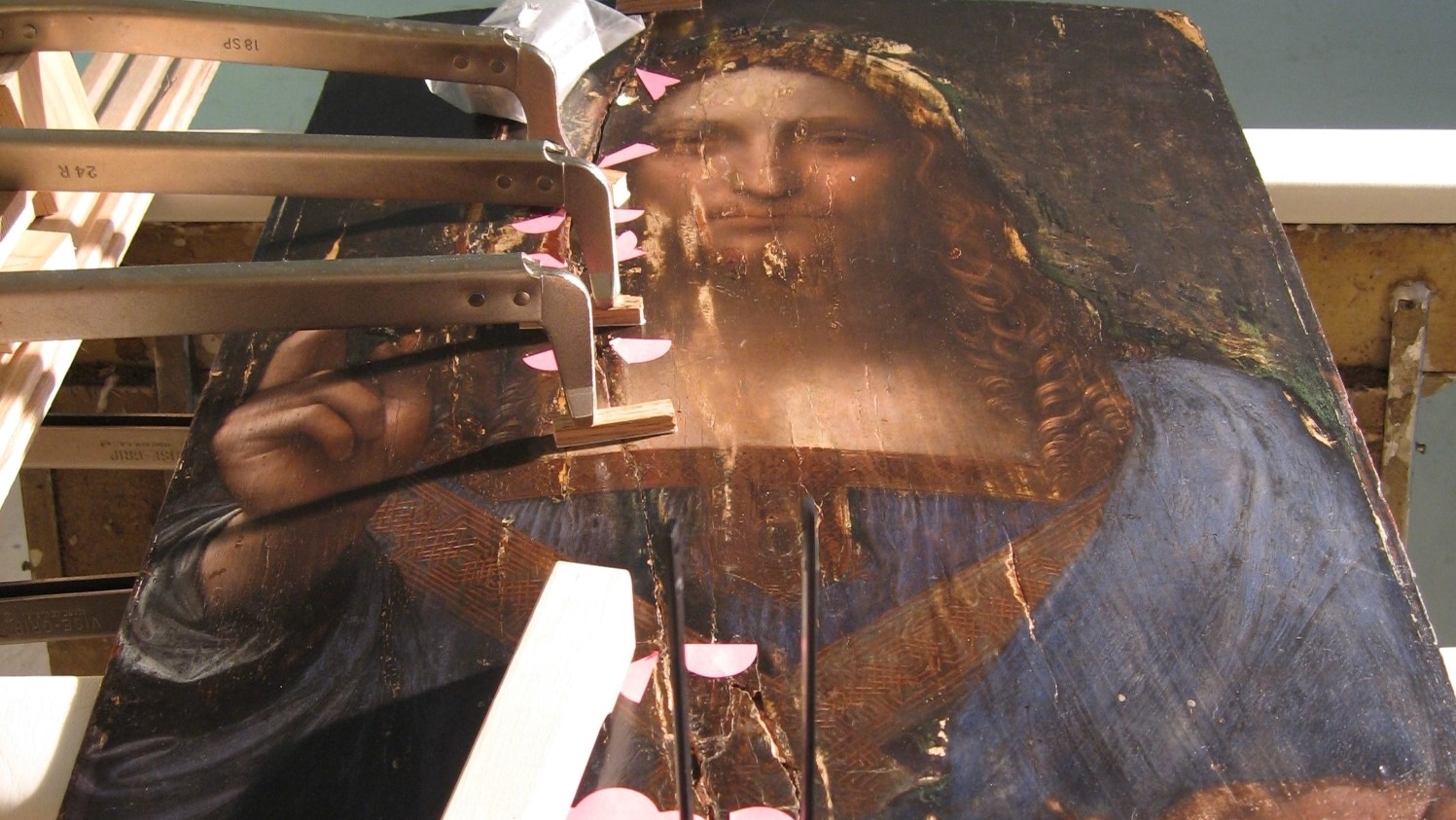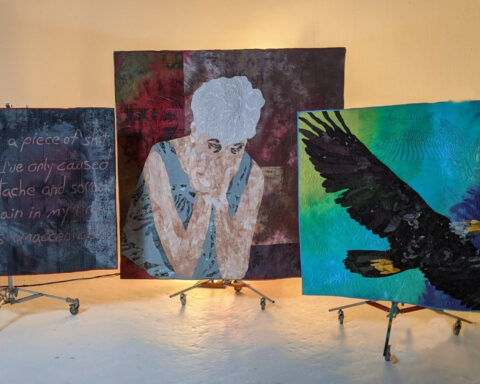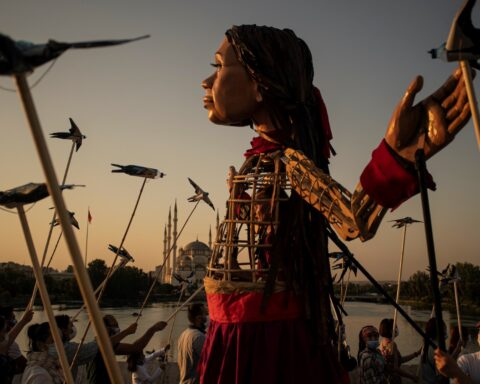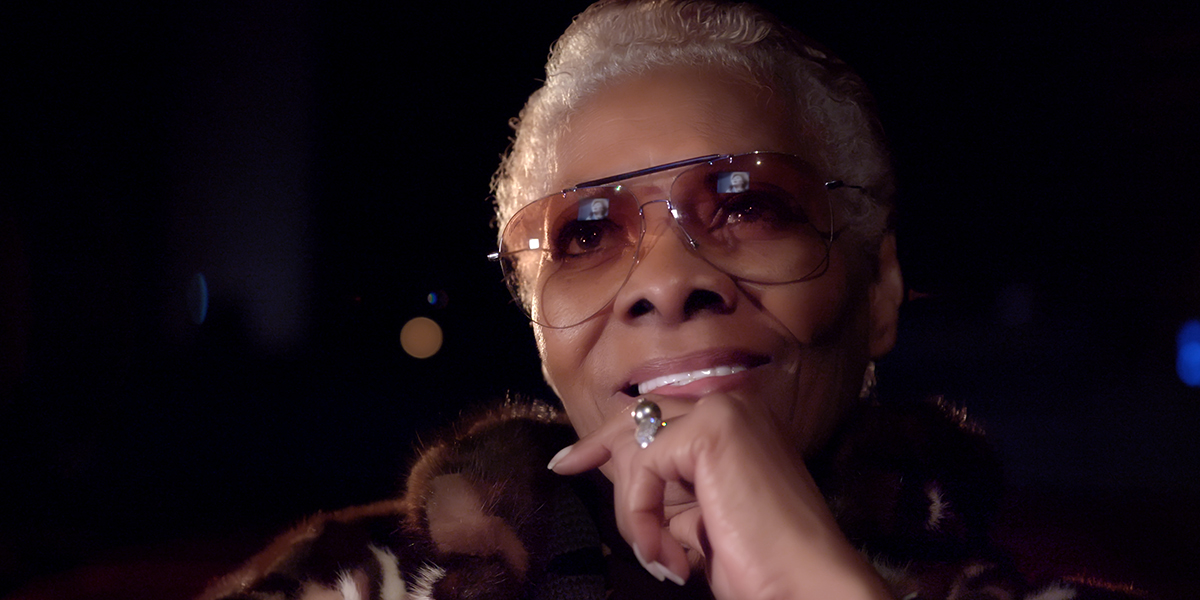The Lost Leonardo
(UK, 95 min.)
Dir. Andreas Koefoed
Do you believe in miracles? Could a painting of Jesus by Leonardo da Vinci suddenly appear nearly 500 years after the Renaissance master artist had died? The Lost Leonardo is one of those docs that is absolutely worth seeing because the story is so compelling. Not only is Andreas Koefoed’s film well researched, but it also has a pace and rhythm that makes one relish its complex narrative. While not stylistically flashy, the makers of The Lost Leonardo urge viewers to savour the political, economic and artistic ramifications of its crucial tale.
Koefoed starts the film in 2005, when Alexander Parish, a self-styled sleeper hunter—someone who looks for unique objects—made a bid of $1,175 with a sympathetic gallerist, Robert Simon, to buy a drastically over painted and degraded version of the Jesus painting Salvator Mundi, which Leonardo is presumed to have painted approximately 500 years earlier (and was copied by his students in the following decades). Parish, Simon and art dealer Warren Adelson felt that they had hit the jackpot, that their painting was the genuine Leonardo original. They hired art restorationist, curator and art professor Diane Dwyer Modestini to work on the painting and she, too, began to believe in its authenticity when she discovered another hand in the pentimento, underneath the top painting. That wouldn’t have happened with a student copying an original work. While continuing her work on it, Mondestini found that Jesus’ lip had been rendered perfectly in a way that was intrinsically Leonardo’s. Convinced, she restored the painting, which has beauty and a real presence to it.
That story would be enough for a good doc, but it’s only Chapter One. The trio, with help from Modestini, had to establish credibility for the painting. While attempting to do that, it was submitted to Dr. Nicholas Penny, soon to be the director of London’s prestigious National Gallery. He, in turn, showed it to experts, who were convinced that it was an authentic Leonardo. After a sensational and controversial launch at the Gallery at the insistence of Leonardo expert and curator Luke Syson, the painting was offered for sale through Sotheby’s. Chapter Two ends ambiguously as it takes years to sell.
In Chapter Three, we meet the rouge Yves Bouvier, a Swiss financier, who eventually buys the painting for $83 million and flips it to Russian oligarch Dmitry Rybolovlev for $127.5 million. All would have been fine, but Bouvier’s slick and dishonourable methods were exposed in an article, which made Rybolovlev furious. It’s here that The Lost Leonardo goes from being a documentary about art and moves into global capitalism. Bouvier was one of the first people to discover a legal loophole: objects can be kept in freeports, in-between borders with no taxes being charged by any government. There are billions of dollars’ worth of precious objects sitting in lockers in freeports around the world. Among them are some of the greatest paintings in the world. They’re out of sight, reduced to being mere commodities.
But let’s move to Chapter Four in which Rybolovlev decides to sell all the art he bought from Bouvier to get back the one billion(!) commission that he had overpaid. Paintings by Klee, Magritte, Picasso and many other masterpieces, all with clear provenances, were sold through Christie’s. But there was the big one, the Salvator Mundi. How to sell that? Christie embarked on a world-wide campaign that didn’t focus on the art but on the notoriety of the work and the splendid intent of the painting. They created a video that never showed the painting, only the looks of awe that spectators—including Leonardo DiCaprio—showed when seeing it. When it went to auction, the question had become whether the formerly lost Leonardo, which some art professionals still don’t believe is truly by the master, would sell for more than the previously held figure for a purchase, $300 million for a de Kooning. Of course, it ended up being the most expensive piece of art sold in the world at $450 million.
Chapter Five: who bought the painting and is it a genuine Leonardo? Supposedly, the buyer was Badr bin Abdullah Al Saud, the minister of culture in Saudi Arabia. Everyone knows that the real purchaser is the notorious MBS, Mohammed bin Salman, the first Deputy Prime Minister of Saudi Arabia, and the de facto ruler of the country since his father let him run it 2017. MBS has been denounced by many for his suppression of every sort of activist in his country. He is personally judged to have been involved in the murder of Washington Post journalist Jamal Khashoggi. MBS is behind the bombings in Yemen and the exacerbated crisis between his country and Qatar. His reason for buying the Salvator Mundi is clear: if displayed at the Louvre outpost in Saudi Arabia, it will increase tourism.
Is the Leonardo Salvator Mundi the real thing? We’ll never know. In fact, until MBS decides to display it, we may still call it the lost Leonardo.
The Lost Leonardo is in release beginning August 27.














